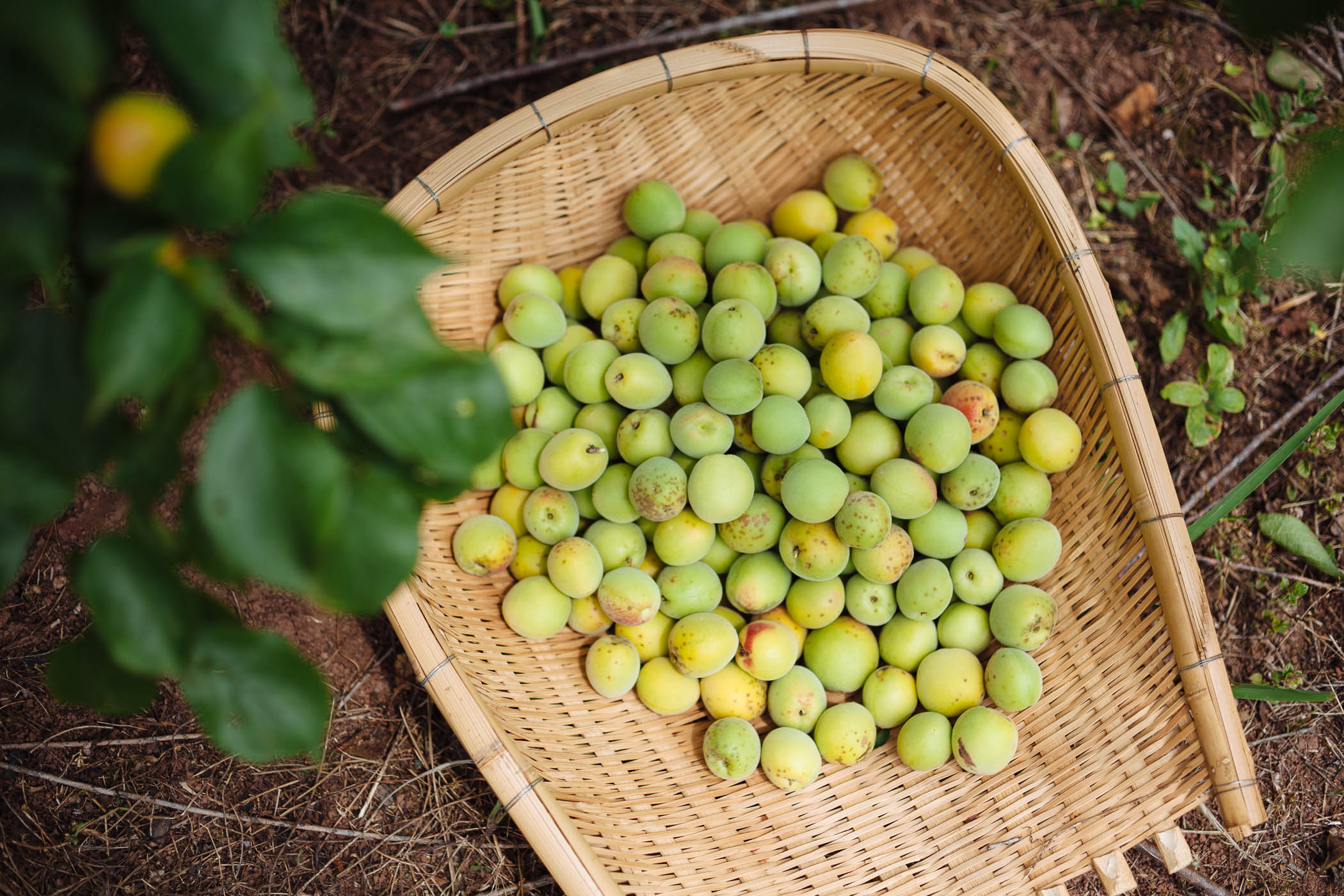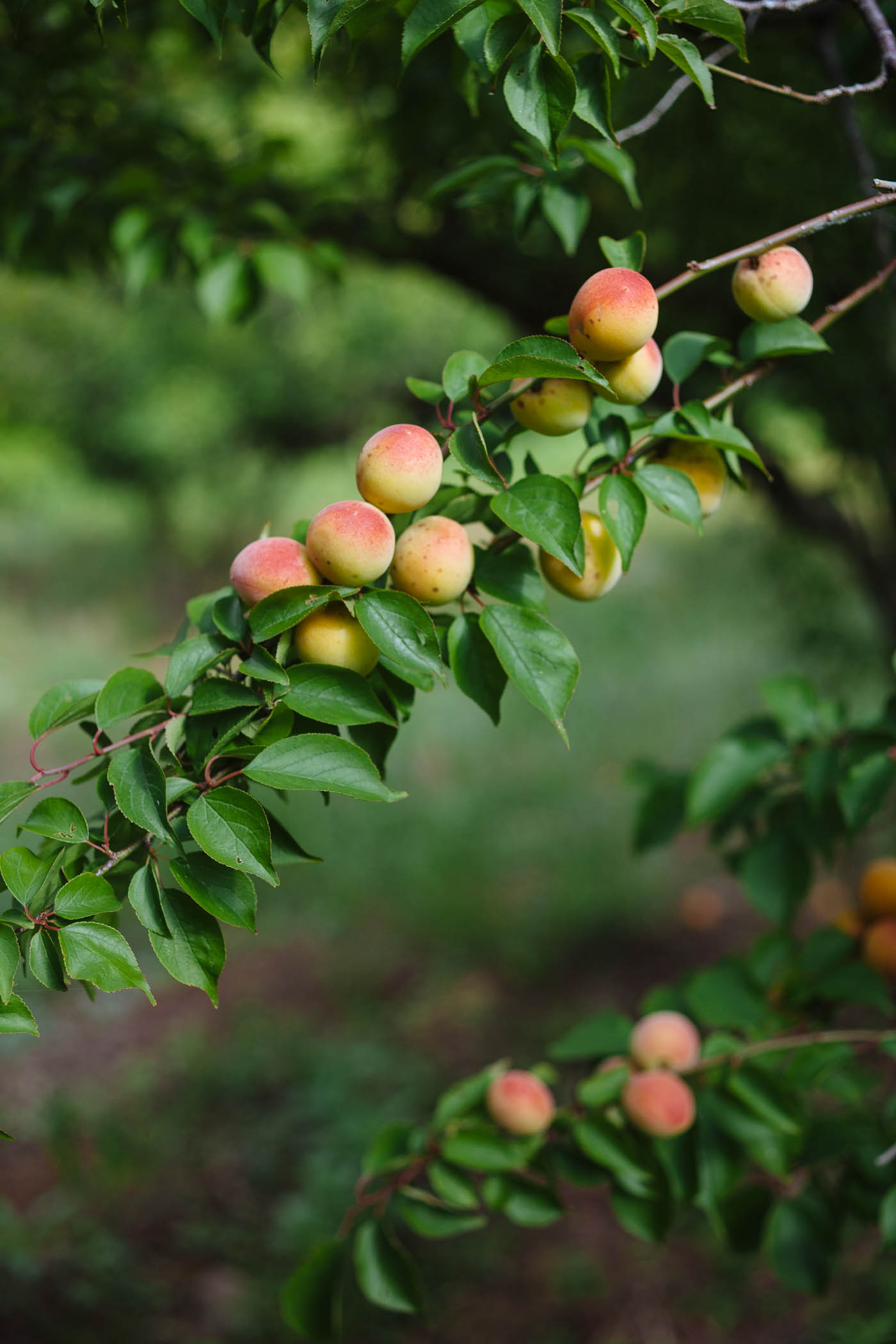Lining the larder with umeboshi

I had only just learned to make umeboshi the year before. Working by Kuniko’s side I scribbled notes on a piece of paper, recording amounts, ratios, timing, and sequence. After so many years, what spark was it that spurred me to finally set myself to this task a mere four months before a stroke would lock those details away in a dark corner of her mind? By June she was home from the hospital but in no condition to make umeboshi so I took the lead, drawing on those scribbled notes that I hadn’t yet properly copied out or typed up. As I plucked the fuzzy green fruits from the trees I noticed that the trees seemed a bit wild. It was only then that I considered the what and when and how of pruning them, a task Kuniko had always arranged with a local farmer friend. But with the stroke of course she hadn’t and we hadn’t thought to think about it. I wondered what else we were leaving unattended.
I brought the harvest inside and soaked them overnight in yellow buckets by the window. I would salt them the next day and add red shiso leaves as soon as they were submerged in their own juices. After cleaning up I sat at the table for a spell feeling supremely grateful and gratified. These annual rituals, processing the bounty and filling the larder with homemade preserves and pickles, are my happiest times. Like Kuniko, I take immeasurable satisfaction in shelves lined with jars of things I’ve made, jars of things to eat when the bounty outside wanes. As a much younger woman, I always imagined myself in New England, drawing from a pantry full of dilly beans, bread and butter pickles, roasted and stewed tomatoes, kraut, jams, and chutneys. I thought I’d hang onions and garlic in the basement and tuck carrots and beets and potatoes into sand as I saw my mother do. Maybe it’s not so different really here in Mirukashi.

Our notions of time have changed and that we can do more in less time hasn’t necessarily been the blessing that it would seem. Many of us, myself included, can feel overworked, our list of things to do so long that our priorities easily tumble out of order. In these busy stretches cooking can feel more dutiful than joyful and from time to time I too forget why I dream this dream. I forget that fire that burns at my core when tending, cooking, preserving, and learning. I can forget that thrill when I glean a new bit of knowledge from a farmer, a cook, or a shopkeeper, and rush off to give something I’ve just learned a try.
I know a lot of people who still make umeboshi at home, but I know these people because I seek them out, they are my tribe, my like minded friends, the ones I turn to when I have questions that Kuniko can no longer answer. But our members are dwindling. It takes too much time, people say. But year after year I’m reminded that with umeboshi, as with so many of these annual acts of preservation, most of the time is spent waiting. If you were to bundle together the time it takes, it wouldn’t total more than a day’s work to make a year’s worth of homemade umeboshi, this most common, emblematic, revered, and soulful food.
